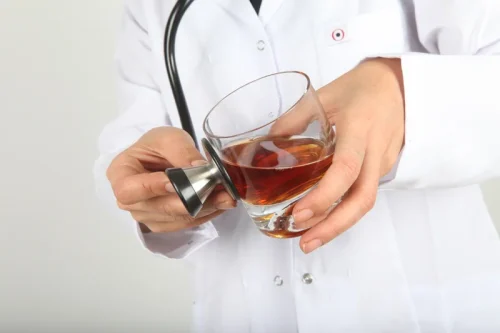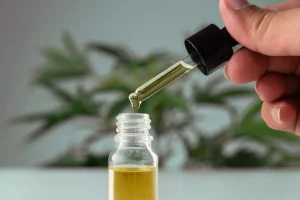
Alternatively, researchers who conduct trials in community-based treatment centers will need to obtain buy-in to test nonabstinence approaches, which may necessitate waiving facility policies regarding drug use during treatment – a significant hurdle. Relapse Prevention (RP) is another well-studied model used in both AUD and DUD treatment (Marlatt & Gordon, 1985). In its original form, RP aims to reduce risk of relapse by teaching participants cognitive and behavioral skills for coping in high-risk situations (Marlatt & Gordon, 1985). More recent versions of RP have included mindfulness-based techniques (Bowen, Chawla, & Marlatt, 2010; Witkiewitz et al., 2014). The RP model has been studied among individuals with both AUD and DUD (especially Cocaine Use Disorder, e.g., Carroll, Rounsaville, & Gawin, 1991); with the largest effect sizes identified in the treatment of AUD (Irvin, Bowers, Dunn, & Wang, 1999). As a newer iteration of RP, Mindfulness-Based Relapse Prevention (MBRP) has a less extensive research base, though it has been tested in samples with a range of SUDs (e.g., Bowen et al., 2009; Bowen et al., 2014; Witkiewitz et al., 2014).
Definitions of relapse and relapse prevention
There is also a need for updated research examining standards of practice in community SUD treatment, including acceptance of non-abstinence goals and facility policies such as administrative discharge. To date, however, there has been little empirical research directly testing this hypothesis. Advocates of nonabstinence approaches often point to indirect evidence, including research examining reasons people with SUD do and do not enter treatment.
G Alan Marlatt
When an urge to use hits, it can be helpful to engage the brain’s reward pathway in an alternative direction by quickly substituting a thought or activity that’s more beneficial or fun— taking a walk, listening to a favorite piece of music. Possible substitutes can be designated in advance, made readily available, listed in a relapse prevention plan, and swiftly summoned when the need arises. Helping people understand whether emotional pain or some other unacknowledged problem is the cause of addition is the province of psychotherapy and a primary reason why it is considered so important in recovery.
- In a prospective study among both men and women being treated for alcohol dependence using the Situational Confidence Questionnaire, higher self-efficacy scores were correlated to a longer interval for relapse to alcohol use8.
- For example, offering nonabstinence treatment may provide a clearer path forward for those who are ambivalent about or unable to achieve abstinence, while such individuals would be more likely to drop out of abstinence-focused treatment.
- For instance, Muraven [81] conducted a study in which participants were randomly assigned to practice small acts self-control acts on a daily basis for two weeks prior to a smoking cessation attempt.
- It reflects the difficulty of resisting a return to substance use in response to what may be intense cravings but before new coping strategies have been learned and new routines have been established.
- Cognitive restructuring techniques are employed to modifying beliefs related to perceived self-efficacy and substance related outcome expectancies (“such as drinking makes me more assertive”, “there is no point in trying to be abstinent I can’t do it”).
Empirical findings relevant to the RP model
If your desk is so cluttered you can’t find your bills, never mind creating a budget; spend some time getting organized so that the mess doesn’t become a barrier to managing your finances. If you can never remember whether you took your vitamins, count them into a pill container every Sunday, so you have a way to keep track. The use of such situational inducements can make a big difference in your ability to follow through on a resolution. A more recent development in the area of managing addictive behaviours is the application of the construct of mindfulness to managing experiences related to craving, negative affect and other emotional states that are believed to impact the process of relapse34.

In Europe, about half (44–46%) of individuals seeking treatment for AUD have non-abstinence goals (Haug & Schaub, 2016; Heather, Adamson, Raistrick, & Slegg, 2010). In the U.S., about 25% of patients seeking treatment for AUD endorsed nonabstinence goals in the early 2010s (Dunn & Strain, 2013), while more recent clinical trials have found between 82 and 91% of those seeking treatment for AUD prefer nonabstinence goals (Falk et al., 2019; Witkiewitz et al., 2019). The Abstinence Violation Effect (AVE) is a psychological phenomenon that refers to a person’s reaction to breaking a self-imposed rule of abstinence or self-control. It occurs when individuals who have set strict rules for themselves regarding certain behaviors or habits (e.g., alcohol consumption, smoking, or eating certain foods) engage in the prohibited behavior, leading to feelings of guilt, shame, and loss of control. Recovery benefits from a detailed relapse prevention plan kept in a handy place—next to your phone charger, taped to the refrigerator door or the inside of a medicine cabinet—for immediate access when cravings hit.
1. Nonabstinence treatment effectiveness
Cognitive restructuring can be used to tackle cognitive errors such as the abstinence violation effect. Clients are taught to reframe their perception of lapses, to view them not as failures but as key learning opportunities resulting from an interaction between various relapse determinants, both of which can be modified the abstinence violation effect refers to in the future. Interpersonal relationships and support systems are highly influenced by intrapersonal processes such as emotion, coping, and expectancies18. Kristen P. Lindgren is an assistant professor and licensed clinical psychologist in the University of Washington’s Department of Psychiatry and Behavioral Sciences.

Rather than labeling oneself as a failure, weak, or a loser, recognizing the effort and progress made before the lapse can provide a more balanced perspective. For Jim and Taylor, this might involve acknowledging the months of sobriety and healthier https://ecosoberhouse.com/ lifestyle choices and understanding that a single incident does not erase that progress. Adi Jaffe, Ph.D., is a lecturer at UCLA and the CEO of IGNTD, an online company that produces podcasts and educational programs on mental health and addiction.

Therapy focuses on providing the individual the necessary skills to prevent a lapse from escalating into a relapse31. Problem solving therapy (PST) is a cognitive behavioural program that addresses interpersonal problems and other problem situations that may trigger stress and thereby increase probability of the addictive behaviour. The four key elements of PST are problem identification, generating alternatives, decision making, implementing solutions, reviewing outcomes and revising steps where needed.
Efforts to evaluate the validity [119] and predictive validity [120] of the taxonomy failed to generate supportive data. It was noted that in focusing on Marlatt’s relapse taxonomy the RREP did not comprehensive evaluation of the full RP model [121]. Nevertheless, these studies were useful in identifying limitations and qualifications of the RP taxonomy and generated valuable suggestions [121]. Mindfulness, is drawn from Zen Buddhist teachings and refers to viewing things in a special way. The mechanisms of mindfulness include being non-judgemental, acceptance, habituation and extinction, relaxation and cognitive change35.

Leave a Reply